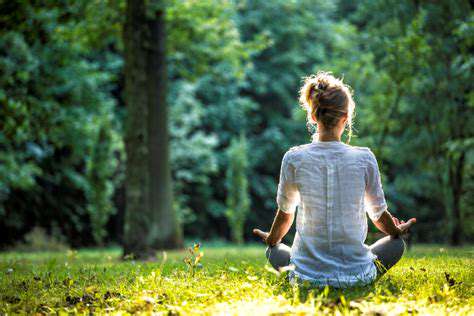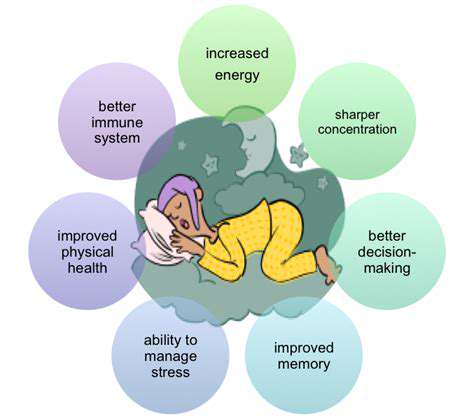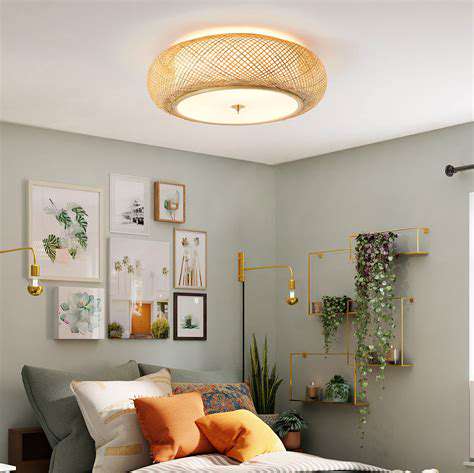How to Create an Evening Routine for Relaxation
Establishing a Consistent Wind-Down Schedule
Understanding the Importance of a Wind-Down Routine
Creating a nightly wind-down ritual is essential for signaling to your body that it's time to shift gears from daytime alertness to nighttime rest. This biological cue triggers a cascade of physiological changes - your stress hormones decrease, your heart rate slows, and sleep-promoting hormones begin their work. Without this transition period, many people find themselves lying awake with racing thoughts, only to wake feeling unrefreshed. The cumulative effect of poor sleep can manifest as daytime fatigue, mood disturbances, and difficulty concentrating.
Creating a Relaxing Pre-Sleep Environment
Transforming your bedroom into a sleep sanctuary requires attention to multiple sensory elements. Darkness matters - consider blackout curtains or an eye mask to block ambient light. Temperature plays a crucial role too; most sleep experts recommend keeping your bedroom between 60-67°F (15-19°C). Your mattress and pillows should provide proper support while feeling comfortable to you personally - there's no one-size-fits-all solution.
Electronic devices pose a particular challenge to modern sleep hygiene. The blue light emitted from screens can delay melatonin production by several hours. If you must use devices in the evening, enable night mode settings at least 2-3 hours before bedtime. Better yet, establish a digital curfew where all screens get turned off at a set time each night.
Incorporating Relaxation Techniques
Different relaxation methods work for different people. Some find solace in reading physical books (e-books don't provide the same benefit due to their light emission), while others prefer audio experiences like calming music or nature sounds. The key is choosing activities that actively help you decompress rather than simply passing time until sleep comes.

Breathwork Fundamentals
Simple breathing exercises can serve as powerful tools for relaxation. The 4-7-8 technique (inhale for 4 counts, hold for 7, exhale for 8) is particularly effective for calming an active mind. This pattern activates your parasympathetic nervous system, counteracting the fight-or-flight response that keeps many people awake.
Progressive Muscle Relaxation
This technique involves systematically tensing and releasing muscle groups from toes to head. The contrast between tension and release helps identify areas of hidden stress. Many people carry tension in their jaws, shoulders, or backs without realizing it until they practice this exercise.
Nourishing Your Body and Mind Before Sleep

Evening Nutrition Choices
What you consume in the evening significantly impacts sleep quality. Heavy meals close to bedtime can cause discomfort, while certain foods like tart cherries, kiwi, or chamomile tea contain compounds that may support sleep. Avoid caffeine after 2 PM as its effects can linger for hours, and while alcohol might make you drowsy initially, it typically disrupts sleep later in the night.
Mindfulness Practices
Simple mindfulness exercises can create mental space between daily stresses and sleep time. The body scan technique, where you mentally check in with each part of your body, helps ground you in the present moment. This practice of non-judgmental awareness can significantly reduce sleep-interfering anxiety.
Cultivating a Routine for Long-Term Well-being
Consistency is Key
Maintaining consistent sleep and wake times - even on weekends - strengthens your circadian rhythm. Your body thrives on predictability, and maintaining this regularity makes falling asleep and waking up easier over time.
Creating Rituals
Develop personal pre-sleep rituals that signal to your brain that the day is ending. This might involve skincare routines, journaling, or preparing your space for the next day. The repetition of these actions creates powerful psychological associations with sleep.
Adapting Over Time
Your ideal wind-down routine may evolve as your life circumstances change. Periodically assess what's working and what isn't. Some people find keeping a simple sleep log helpful for identifying patterns and making adjustments.











